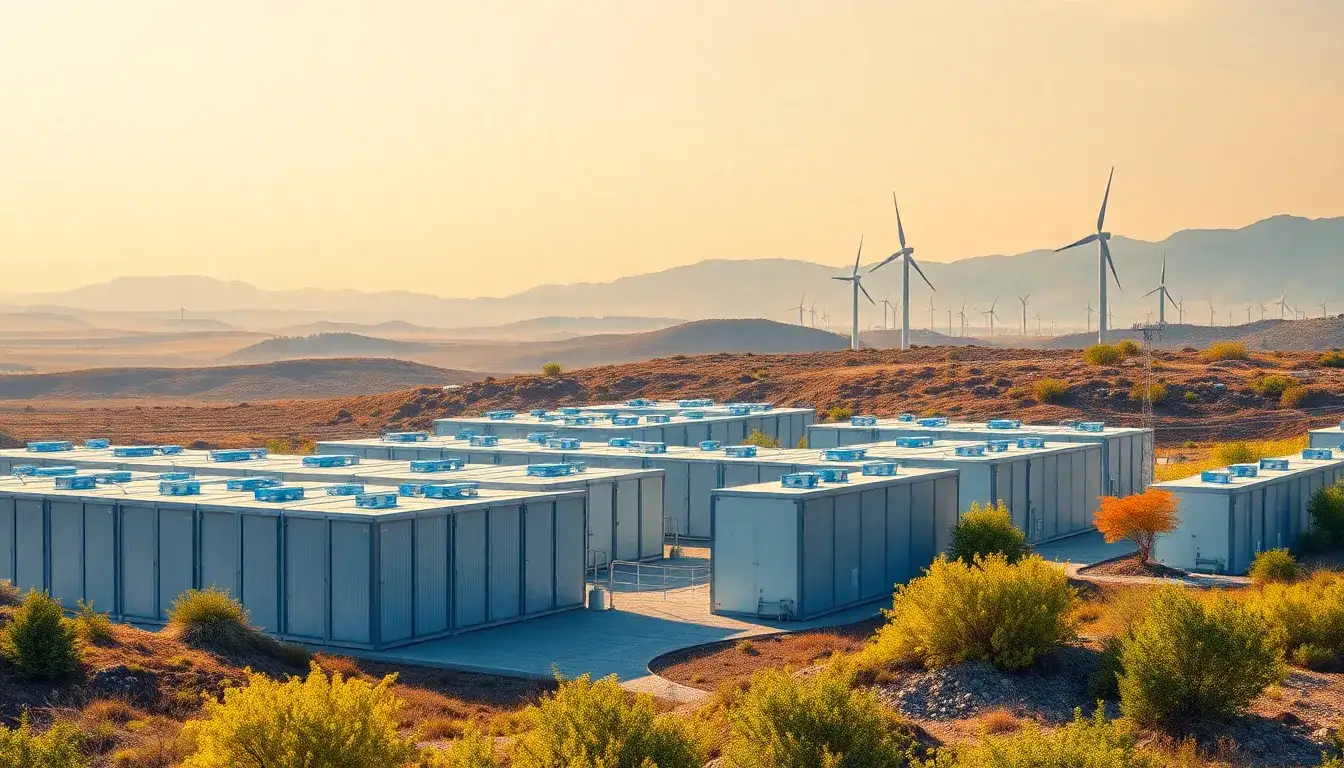
The energy storage market is witnessing significant changes with a notable 332 GWh of new storage capacity added in just two months. On March 5, it was widely reported that Tesla would be building a new energy storage factory in Texas, followed by the unveiling of CATL‘s plans for a 40 GWh large battery factory in Fujian on March 7. This points to a recovery in the industry, with a new wave of capacity expansion driven by policy guidance urging companies to “combine effective supply with expanded demand and reduce low-level redundant construction.”
With market demand rising annually, how can the energy storage sector capitalize on this growing opportunity? The industry is poised for another wave of capacity expansion by 2025. Over the past two months, 13 provinces have announced energy storage plans, with a total of 23 projects and an added capacity exceeding 332 GWh. Notably, the top ten capacities involve energy storage system integration, indicating that companies are increasingly aware of the entire industry chain. Major battery manufacturers like Ruipu Lanjun, China Innovation Aviation, and Ganfeng Lithium are progressively moving into downstream sectors.
The Ruipu Lanjun facility in Jiangsu, which began construction on January 1, will not only feature four fully automated battery module lines but will also establish production lines for energy storage system integration and inverters. Similarly, the Hebei Xingtai facility, with a total investment of 800 million yuan, will produce 3 GWh of lithium batteries and an equal amount of energy storage systems. Another company, Jieyuan New Energy, has invested 5 billion yuan in energy storage equipment manufacturing, focusing on lithium battery modules, PACK, and core 3S systems.
From an investment perspective, four major energy storage capacity plans have exceeded 10 billion yuan, highlighting significant expansions by leading companies. For instance, Yiwei Lithium Energy launched its Hubei Phase II project on January 2, announcing the mass production of its 628 Ah battery cells, becoming the first in the industry to achieve this milestone. Penghui Energy is nearing trial production of its 12 GWh energy cell production base in Shandong, while Envision Group is establishing what will become the largest lithium battery industrial base in Northern China.
Geographically, the energy storage industry is clearly shifting northward, with Henan leading the way with a total investment of 13.3 billion yuan and an additional capacity of 62 GWh. Following closely is Jiangsu, which is adding 47 GWh of capacity, with a greater number of participating companies—five projects collectively investing 11.2 billion yuan. Additionally, Hebei has revealed three industrial projects, while Shandong, Guangxi, and Anhui have each announced two projects. Other provinces such as Hubei, Shanghai, Guangdong, Gansu, Xinjiang, Chongqing, and Yunnan have also disclosed new initiatives.
However, with over 82% of the planned capacity having room for adjustment, the industry faces potential overcapacity issues. Among the 25 projects in progress, 15 are under construction, including those that have commenced, reached completion, or have begun equipment installation. Only four projects have actually commenced production, indicating that a significant portion of the new 332 GWh capacity is still not fully realized. This raises concerns about the viability of operating facilities facing potential overcapacity.
While leading battery manufacturers like CATL and BYD continue to expand, smaller companies must tread carefully. Data shows that larger companies, such as Ganfeng Lithium, Yiwei Lithium Energy, Envision, Penghui Energy, and Tesla, possess stable customer bases and strong market competitiveness. Meanwhile, state-backed enterprises such as Ningxin Chudong and Shandong Electric have inherent advantages due to their capital and resource backing. As the industry undergoes consolidation, smaller firms lacking funding or technology may face market elimination, with the remaining market share likely consolidating among the stronger companies.
The real risk of overcapacity stems from technological iterations. According to statistics, of the 332 GWh newly added energy storage capacity planned for 2025, 282 GWh will be lithium-ion batteries. Although lithium-ion batteries continue to dominate, alternative technologies such as sodium batteries, vanadium flow batteries, lead-carbon batteries, and solid-state batteries are beginning to emerge, with a total planned capacity of 50 GWh. Notably, on March 8, Nanfu Battery announced its entry into solid-state battery development, aiming to deliver samples for large-scale storage equipment by 2030. Both CATL and BYD have also set production goals for solid-state batteries, targeting 2026 and 2027.
As the energy storage landscape evolves, companies are increasingly looking beyond domestic markets. In just two months, three firms have announced plans for overseas production bases. For many companies, expanding production capacity internationally is not just an option but a strategic necessity. For instance, Ruipu Lanjun announced on January 9 that it would build a 8 GWh battery factory for power and energy storage in Indonesia, solidifying its position in Southeast Asia. Last year, the company also established a U.S. subsidiary to explore the American market.
Overall, Ruipu Lanjun aims to exceed a global production capacity of 95 GWh by 2025, with bases and marketing centers across six continents. Currently, over 50% of its products are exported, providing substantial support for its sales. In recent years, Chinese companies have increasingly targeted overseas energy storage markets, not only in mainstream regions like Europe, North America, and Australia but also in emerging markets across East Asia, South Asia, Southeast Asia, Africa, and the Middle East. According to CNESA, Chinese energy storage companies signed overseas contracts exceeding 150 GWh in 2024.
However, as global interest in renewable energy grows in pursuit of carbon neutrality, foreign governments and investors are also paying close attention to the energy storage market. Many countries are implementing stricter import controls to support local industries, complicating the process for foreign products. As the U.S. and Europe strengthen domestic production, companies with the ability to expand capacity overseas may gain a competitive advantage.







